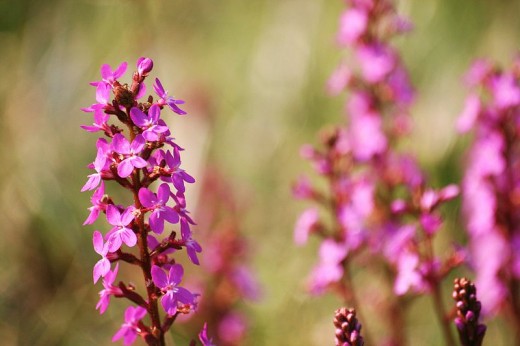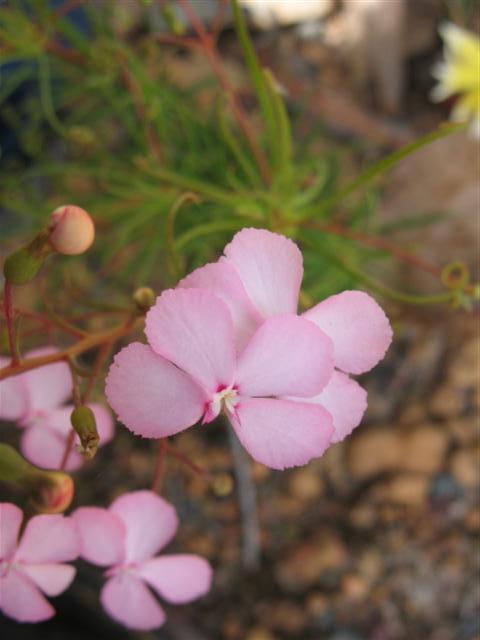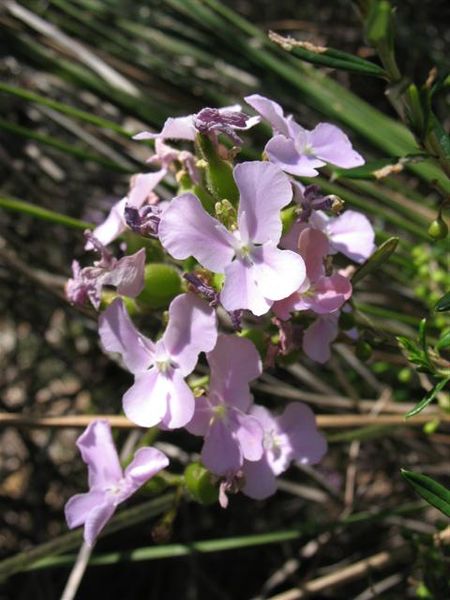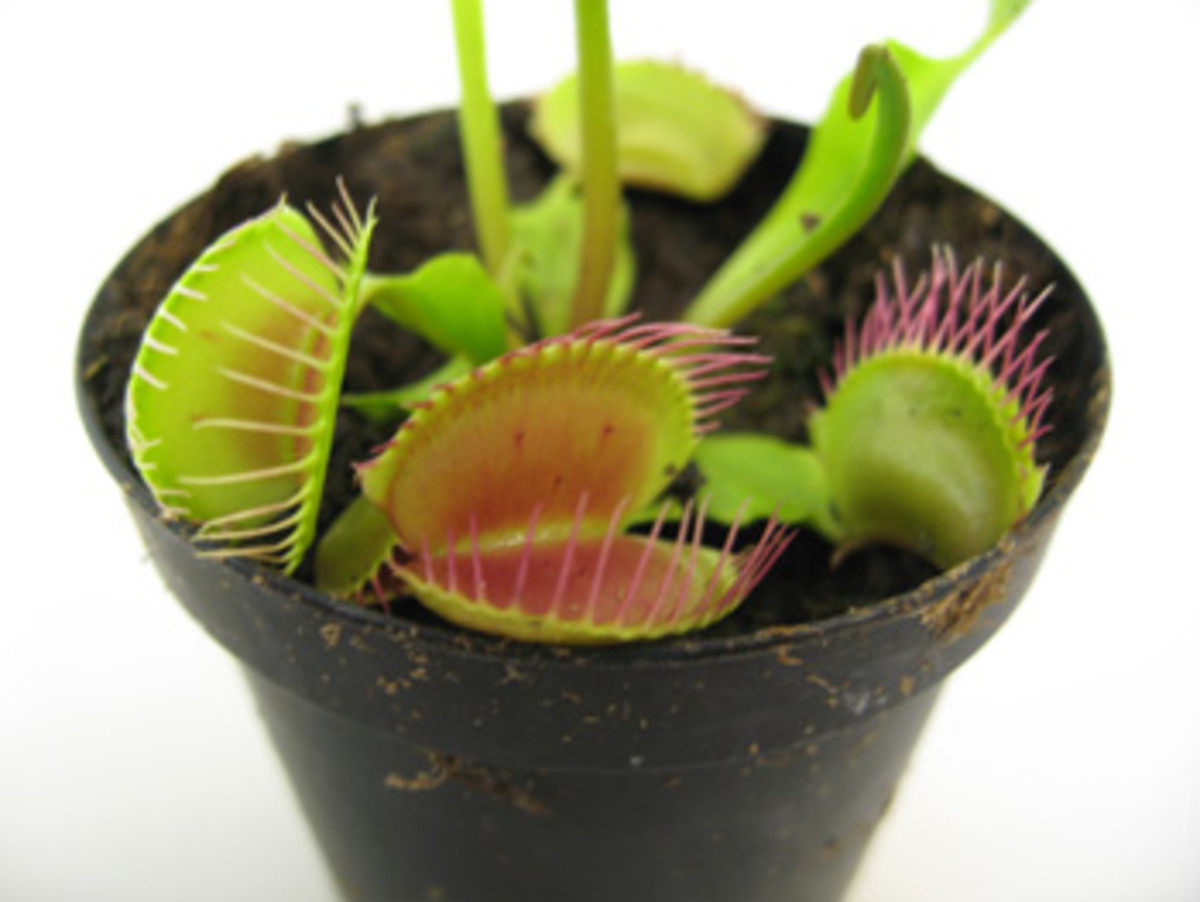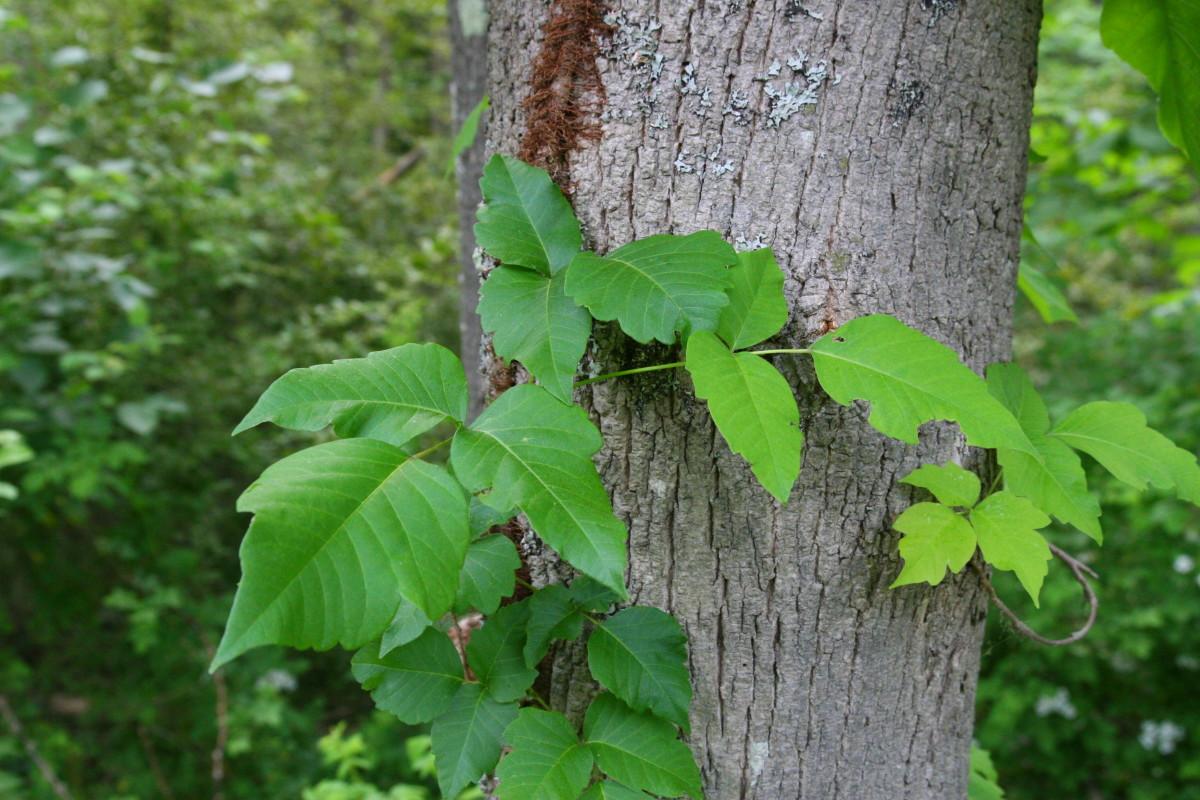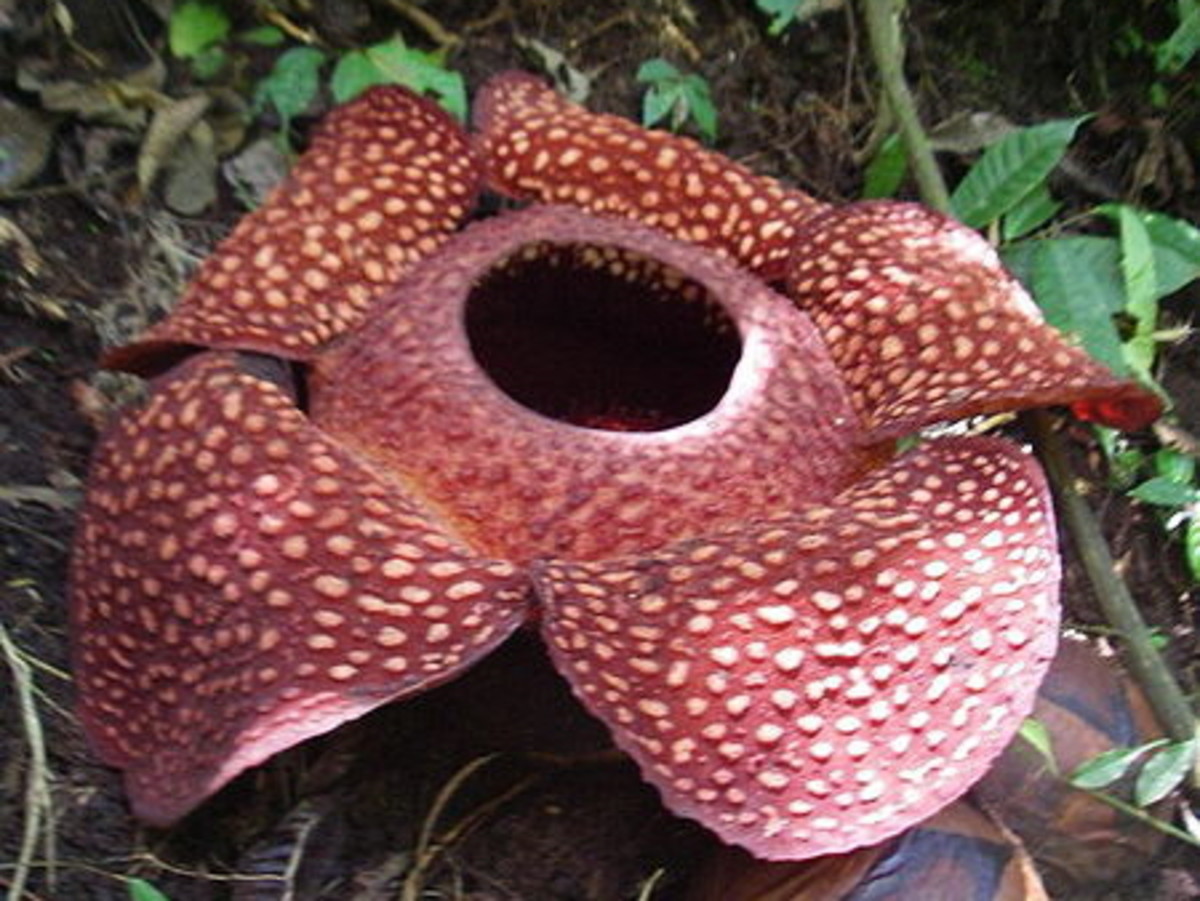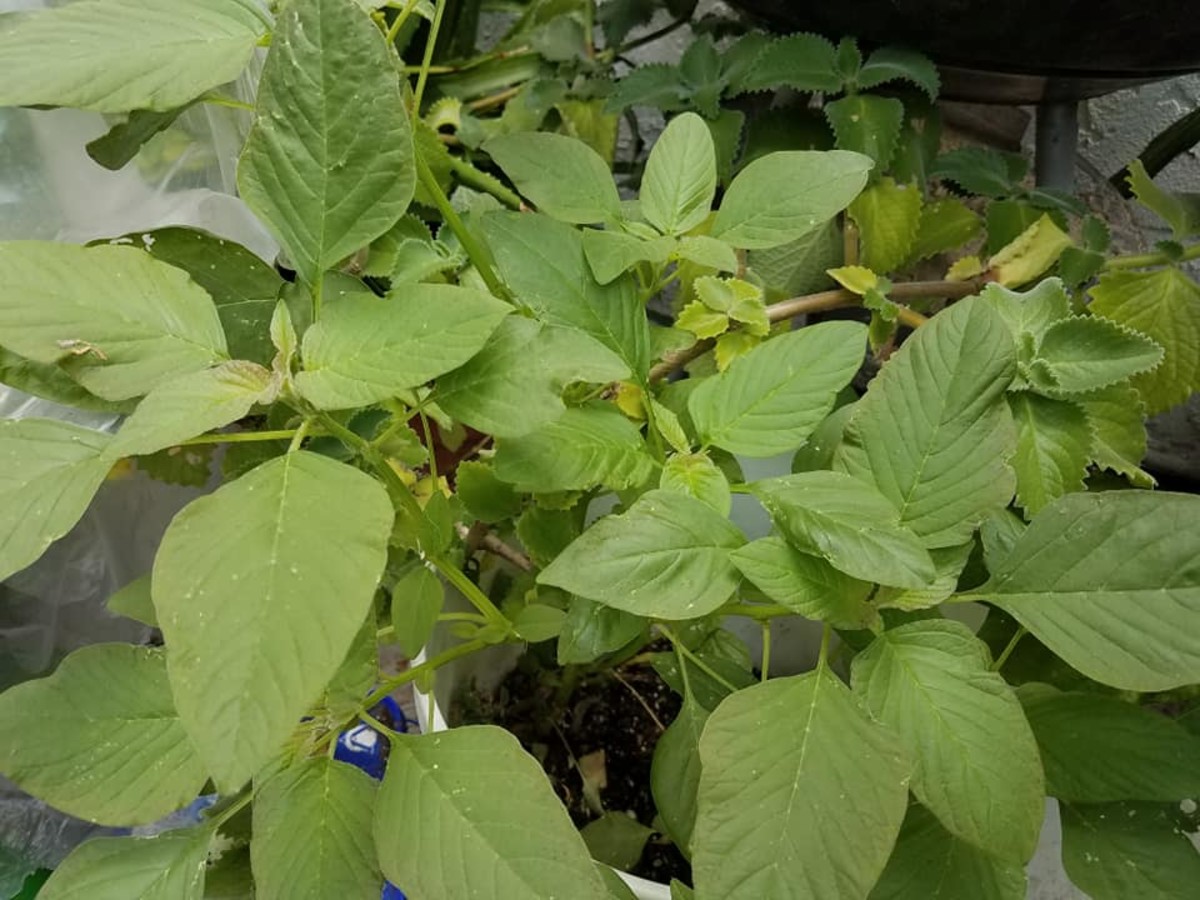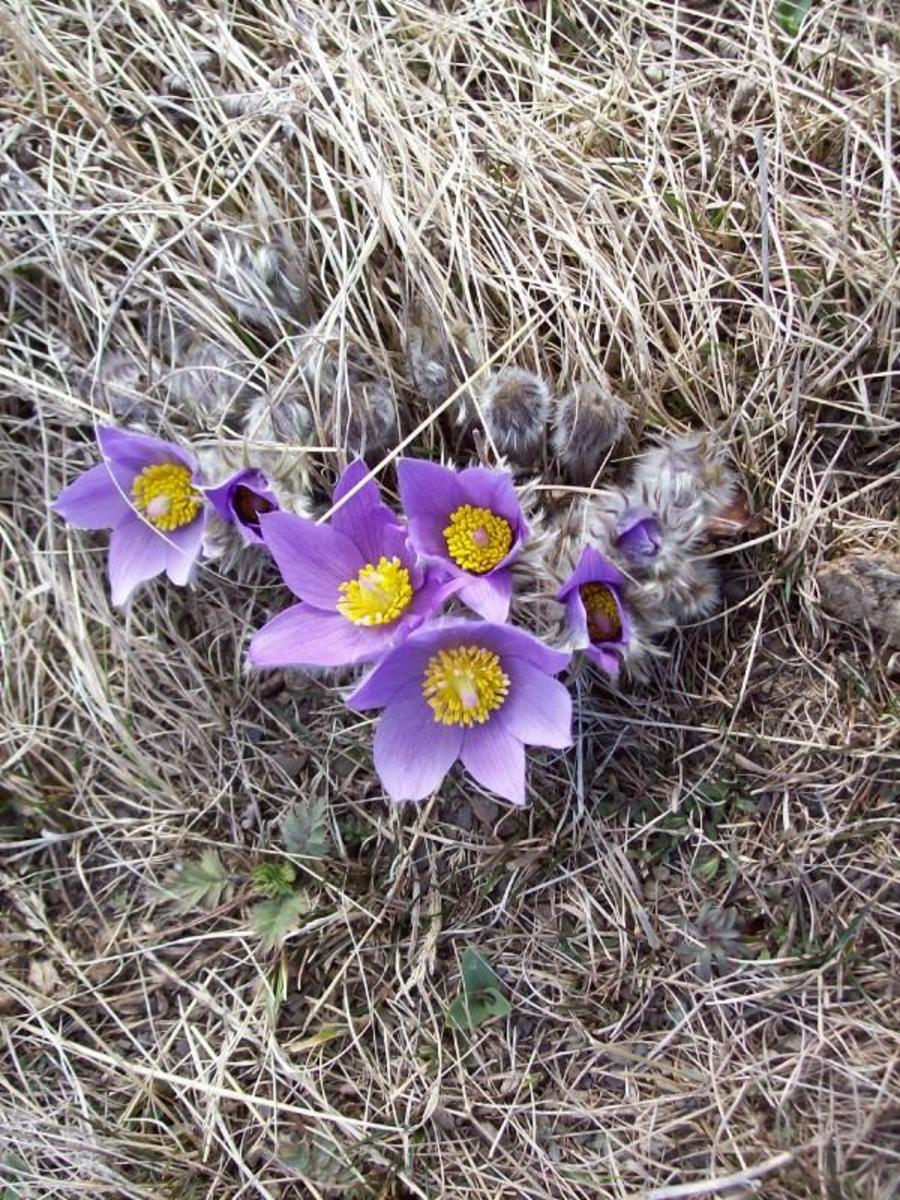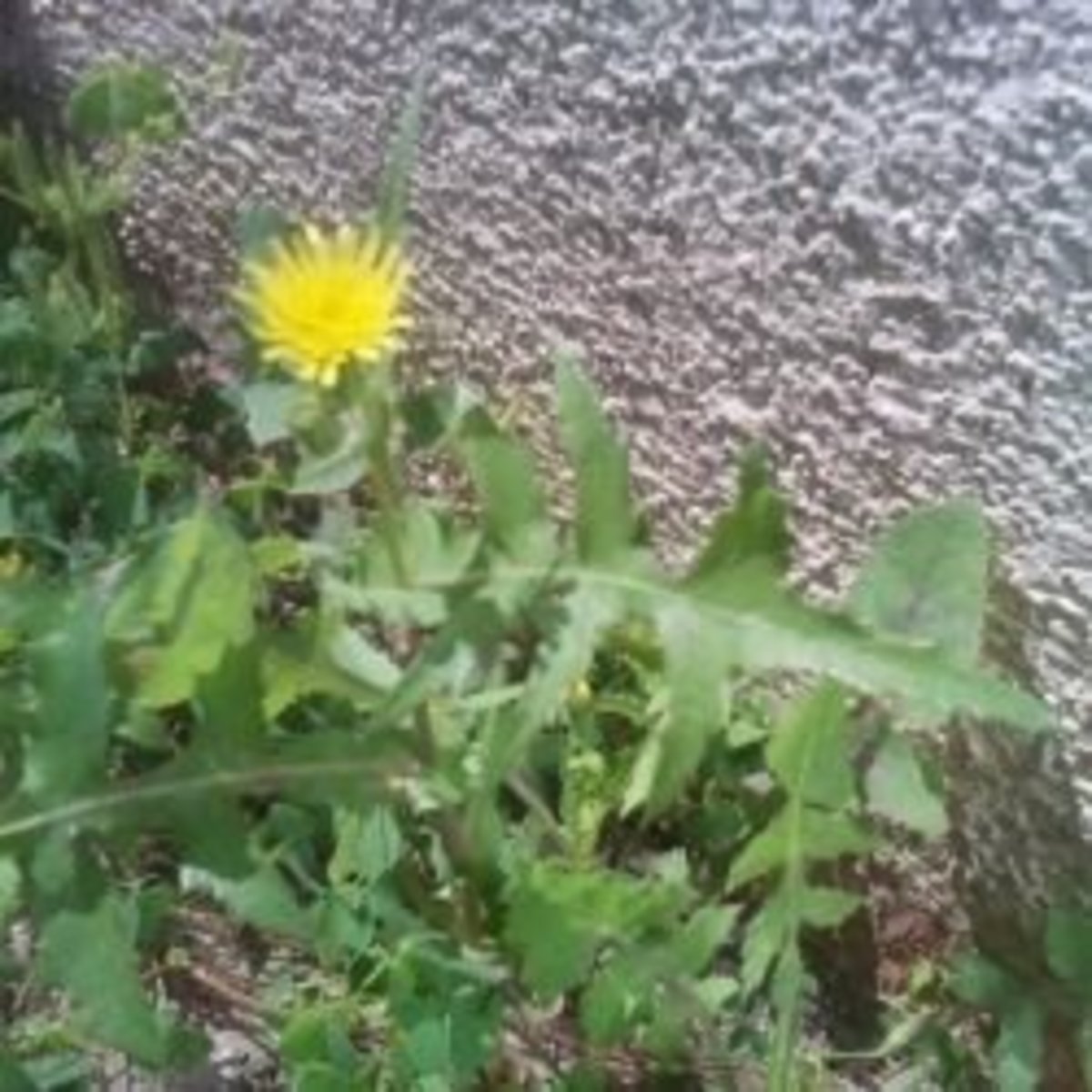Trigger Plants (Genus Stylidium)
I wanted to take the time today to write about a little known group of plants known as trigger plants, all belonging to the genus Stylidium. Most trigger plants are perennial herbs, some of them die back to a bulb and a few are ephemeral annuals (going through more than 1 generation per growing season). Trigger plants are fascinating for two main reasons. The first is that they possess one of the most interesting methods of pollination in all the plant kingdom, the second is that they are also carnivorous. Additionally they are rather pretty wildflowers in their own right. Since I've been looking at carnivorous plants in a few of my recent articles (Insect Eaters: 10 Carnivorous Plants and Pitcher Plant Diversity: A Look At 10 Species) I thought it might be appropriate to talk about Trigger Plants, one of my personal favorite groups of plants.
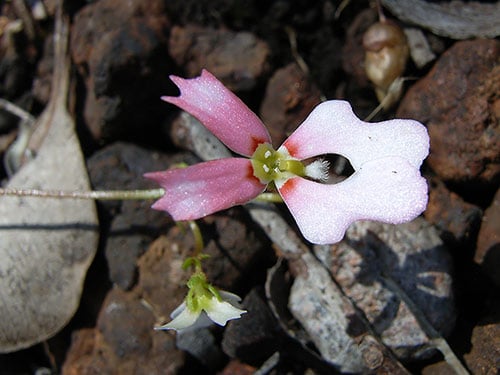
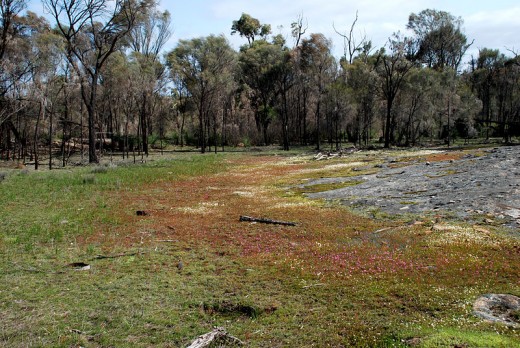
Stylidium Distribution
There are at least 300 species of Stylidium, many of which are yet to receive formal description, and many more yet likely to be discovered. Most Trigger Plant species are endemic to Australia but the range of at least 2 species (Stylidium uliginosum and Stylidium alsinoides) extends into parts of Asia. There are also at least two species which are not found in Australia at all (Stylidium kunthii from Bengal and Myanmar and Stylidium tenellum from Melaka, Myanmar and Tonkin). Depending on the particular species, trigger plants can be found in a variety of habitats including grassy plains, forests, open heaths, rocky slopes, sandplains, and along the margins of creeks and water holes. Despite the fact that they belong to the fifth most diverse (by number of species) genus of native Australian plants, Trigger Plants are rarely seen growing as garden plants in this country. Natural hybrids can sometimes occur between certain co-existing species, although this is rare due to the unique pollination mechanism of this genus explained below.
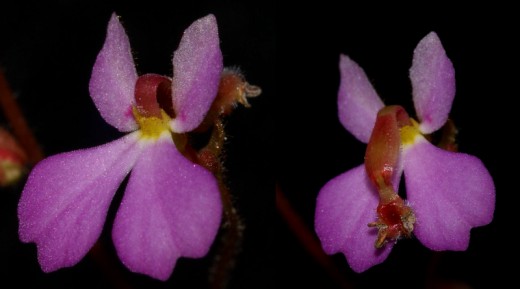
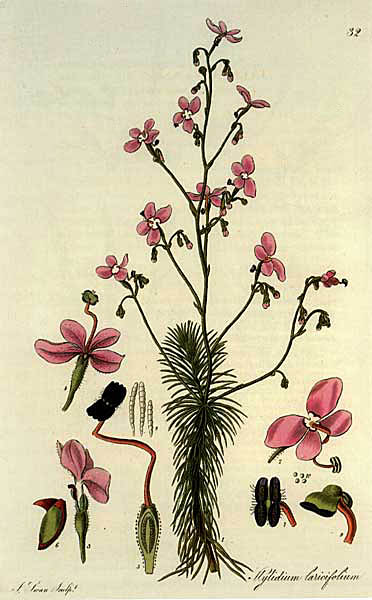
Pollination Of Trigger Plants
Trigger Plants normally flower during late Spring. A unique feature of Trigger Plant flowers is the floral column which at rest is held behind the flower. This column is actually a fusion of the stamens and anthers (male parts) and the style and stigma (female parts) of the flower. When an insect lands on the flower to feed on nectar it triggers a mechanisms and the floral column springs forward, coming in contact with the body of the insect. This can occur quite rapidly in as little as 15 milliseconds. The different male and female parts of the floral coloumn are active at different times in order to avoid self-pollination. The anthers (where the pollen is produced) typically develop first. Any insect landing on a Trigger Plant flower early in its life will be dabbed with a bit of pollen. Later in its life, the developing style pushes aside the anthers and becomes receptive. When an insect lands on a Trigger Plant flower later in its life the receptive stigma at the end of the style picks up pollen deposited from another plant, completeing pollination. Different species of Trigger Plant tend to deposit pollen on different areas of visiting insects, some will deposit it on the upper-surface of the insect and some on the lower-surface. This pollination-specificity is one of the reasons natural hybrids are so rare.
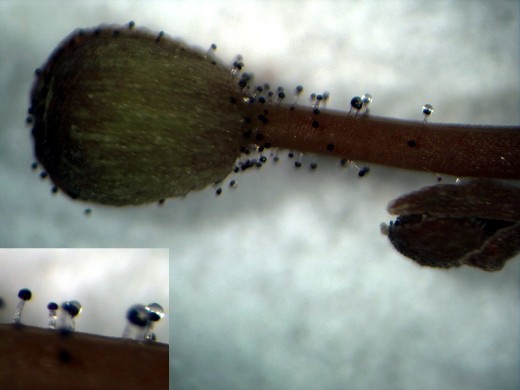
Carnivorous?
Trigger plants have a second interesting trait. They have glandular trichomes (small outgrowths of hairs) on the sepals (the part of the flower below the petals), leaves, stem and/or flower stalk depending on the species. The tips of these trichomes produce a sticky mucus that can trap and suffocate very small insects, luckily however the trichomes are too small to capture any of the insects that would normally pollinate the flower. There are two theories why Trigger Plants have these trichomes. The first is that they serve as a defense against small insects that could feed on and damage the plant or flowers. The second is that Trigger Plants are in fact carnivorous and feed upon these insects that are too small to be useful as pollinators. Originally Trigger Plants were thought to be protocarnivorous, unable to produce their own digestive enzymes and instead obtaining nutrients by indirect means such as symbiosis with bacteria that break down their prey. However digestive enzymes have been found in at least one species (Stylidium fimbriatum), which means this particular species is a true carnivorous plant. There may be many more species that produce digestive enzymes and further testing is needed to determine the extent of true carnivory in Trigger Plants.
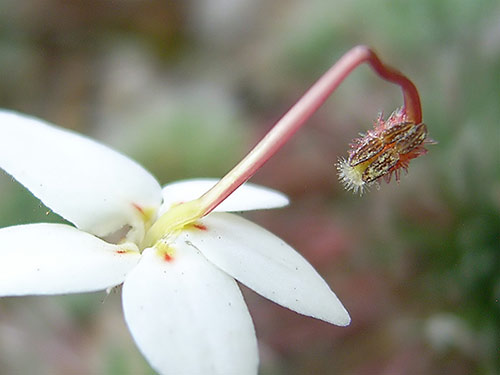
Cultivation
Most Trigger Plants are hardy, being drought and frost resistant and easily cultivated in greenhouses or gardens. Most species can be grown successfully outside their natural range. Germination of seed is easy in some species, but more challenging in others that require a period of seed dormancy or smoke treatment to simulate germination after a bush-fire. Trigger plants prefer growing in soil or media that is low in nutrients, so avoid over fertilizing. They also dislike having their roots disturbed, so handle gently when repotting or planting out into the soil.
More Photographs Of Various Trigger Plant Species
